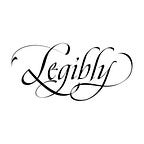The art of calligraphy is a timeless craft, blending creativity and precision in a way that produces beautiful results. If you’ve been practicing calligraphy as a hobby and are considering turning it into a business, you’re likely filled with a mix of excitement and uncertainty. Starting a business can be a daunting task, but with the right approach, your calligraphy venture can become a successful reality. This article will guide you through the basic steps of starting your own calligraphy business.
- Creating a Business Plan for the Wedding Market and Digital Products
Crafting a business plan is the first crucial step in turning your calligraphy hobby into a business. Given the popularity of calligraphy in the wedding industry and the growing demand for digital calligraphy products, these two markets can provide a lucrative opportunity.
Your business plan should clearly define your target market. In this case, you’ll be focusing on customers planning weddings and those interested in digital calligraphy products. You’ll need to understand their needs, preferences, and how you can meet them with your products and services.
For the wedding market, you might offer services like invitation design, place cards, and signage. On the digital side, you could create guide sheets, label templates, and other digital assets for sale on platforms like Etsy.
Pricing is another key aspect of your business plan. Research the market to understand what customers are willing to pay for these services and products. For instance, digital calligraphy products on Etsy can range from $5 for a simple guide sheet to $50 for a comprehensive template set.
Your marketing strategy should outline how you’ll reach your target customers. Social media, wedding expos, and Etsy’s built-in audience can be effective ways to market your business.
Finally, your business plan should include a financial forecast. Based on your pricing and estimated sales volume (for example, selling 200 guide sheets at $5 each would yield $1,000), you can project your potential income. Don’t forget to subtract Etsy fees and any other expenses to calculate your net profit.
2. Understanding Legal Requirements in the USA
The legal aspects of starting a business in the USA can seem complex, but understanding the basics can help you navigate this process. Here are some key points to consider:
- Business Registration: You’ll need to register your business with the state where you plan to operate. The process and fees vary by state, so check your state’s specific requirements.
- Business Structure: Choose a legal structure for your business. This could be a sole proprietorship, partnership, LLC, or corporation. Each has different implications for liability, taxation, and record-keeping. Many small businesses start as sole proprietorships or LLCs.
- Licenses and Permits: Depending on your state and the nature of your business, you may need certain licenses or permits. For a calligraphy business operating online, these requirements may be minimal.
- Sales Tax: If you’re selling physical products, you’ll likely need to collect sales tax. The rules for digital products vary by state. You’ll need to register for a sales tax permit in your state and understand how to collect and remit the tax.
- EIN: Most businesses need an Employer Identification Number (EIN) from the IRS, even if they don’t have employees. This is used for tax filing and reporting purposes.
- It’s always a good idea to consult with a business advisor or attorney to ensure you’re meeting all legal requirements when starting your business.
3. Determining Initial Investment for a Wedding Calligraphy Business
Starting a calligraphy business that caters to the wedding industry requires an initial investment. Here’s a breakdown of potential starting costs
Calligraphy Supplies:
- Calligraphy Pens: A quality calligraphy pen can range from $30 to $50. As a professional, you might want to have several pens with different nibs for various styles. Let’s budget $150 for pens.
- Ink: A bottle of high-quality calligraphy ink can cost around $10. You’ll want a variety of colors to offer your clients. Let’s budget $50 for ink.
- Paper: The cost of paper can vary greatly depending on the quality and type. For a wedding, you’ll likely be using high-quality card stock for invitations and place cards. Let’s budget $100 for paper.
Digital Design Software:
If you plan to design digitally before printing, you’ll need software like Adobe Illustrator. The cost is approximately $20.99/month, but let’s budget for a year’s subscription, which is about $251.88.
Printing Costs:
If you’re printing the invitations yourself, you’ll need a high-quality printer. A good printer for this purpose can cost around $200. Alternatively, you could use a professional printing service, but costs for this can vary widely.
Marketing Costs:
Setting up a website can cost around $100-$200 for a basic site. You might also consider budgeting for advertising on social media or wedding-specific platforms. Let’s budget $200 for marketing to start.
Legal Protection:
Based on the information from The Contract Shop, it’s crucial to have a contract in place to protect your business. This contract template, specifically designed for calligraphers and stationers, costs $455. Without a contract, you’re setting yourself up for years of fighting refund requests and getting bullied by cheap clients.
Total Initial Investment:
Adding up all these costs, your initial investment might be around $1400-$1900. This doesn’t include your time spent on creating the calligraphy pieces, which you should also consider.
Remember, these are just estimates and the actual costs can vary. It’s important to do your own research and adjust these numbers based on your specific situation and local prices.
